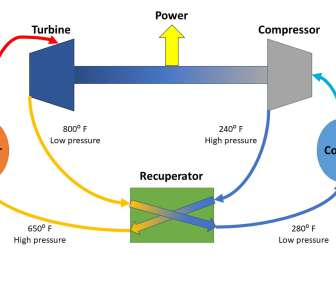Sandia team puts power into local grid with supercritical CO2 closed-loop Brayton-cycle turbine
Green Car Congress
AUGUST 22, 2022
In comparison, the Brayton cycle has a theoretical conversion efficiency upwards of 50%. The compressor gets the supercritical CO 2 up to the necessary pressure before it meets up with waste heat in the recuperator and returns to the heater to continue the cycle. The recuperator improves the overall efficiency of the system.






















Let's personalize your content